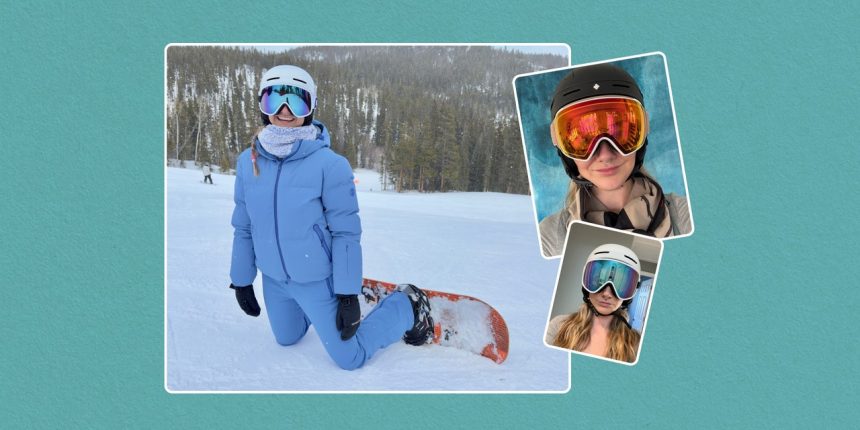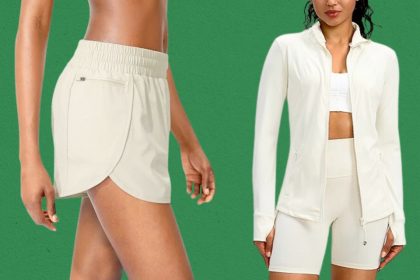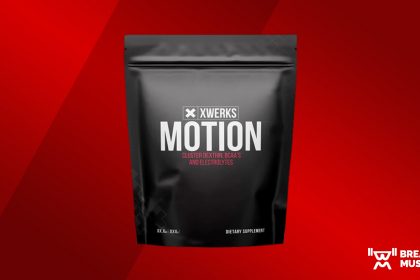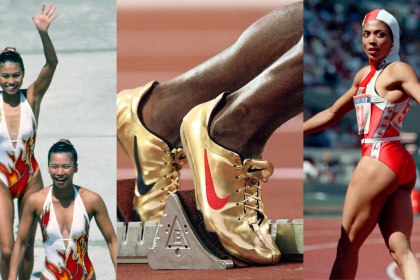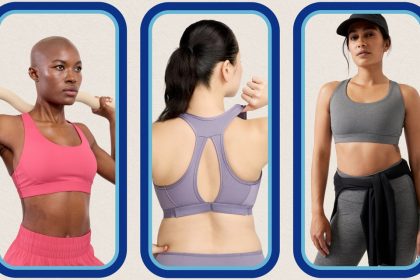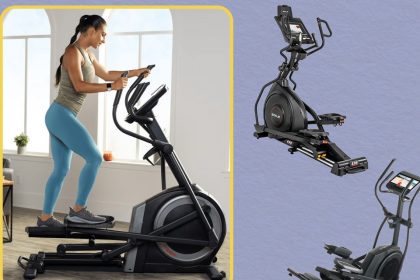Lots of things can put a damper on a gorgeous day on the mountain: nasty weather, bad layering, a confidence-crushing wipeout—but if you pack the best pair of ski goggles, snow blindness doesn’t have to be one of them. For anyone who’s been lucky enough not to experience it, snow blindness—technically called ultraviolet (UV) keratitis—happens when your corneas are exposed to too much ultraviolet light, which reflects off snow. It can cause eye pain and can affect your vision for hours afterwards—not to mention that it’s a serious safety hazard when you’re on the slopes.
Good goggles can prevent snow blindness, protect a large portion of your face from cold and wind, and help you see better in bright conditions. Bad ones fog up and distort your vision. But with so many options out there (and lots of complicated technical specs to decode), shopping for the right pair can be a pain. So we did the research for you and put a bunch of goggles to the test on the mountain. Shop our winners below.
Our top picks
- Best Overall: Smith I/O Mag
- Best Photochromic: Glade Adapt 2
- Best Cylindrical: Oakley Line Miner Pro M Snow Goggles
- Best Budget Pick: Flylow Perform Photochromic
- Smartest Design: Anon M4 Toric MFI
- Best Lens Change System: Zeal Lookout
- Best Toric: Poc Vitrea
What to look for when shopping for ski and snowboard goggles
There are three lens shapes: cylindrical, spherical, and toric.
- Cylindrical lenses tend to be less expensive, but may have more issues with glare and distortion.
- Spherical lenses provide better peripheral vision and a more accurate field of view with less glare. Usually, there’s also more space between these lenses and your face, which can help prevent fogging.
- Toric lenses are the least common, and they’re a combination of cylindrical and spherical lenses. These provide the most optically accurate field of view and minimal distortion.
But some lens shapes will feel better on your face then others, so trying on goggles before you buy them is always a good move.
You’ll also want to decide between interchangeable lenses or photochromic ones. Interchangeable lenses are tinted to allow for different amounts of VLT (visible light transmission). This is the percentage of light that passes through the lenses. A higher VLT means more light passes through—these lenses are great for overcast days, when you’re skiing in flat light. Lower VLT lenses have a darker tint and will provide better visibility on sunny days.
Photochromic lenses adjust to all light conditions, so you don’t have to swap lenses (they’ll work equally well on bluebird days and in falling snow). Which type you choose comes down to personal preference. Photochromic lenses can be more convenient, but force you to stick with one VLT range. With interchangeable lenses, you can build a collection of styles that have specific VLT levels for the conditions you typically ski or snowboard in.
One last thing to note: VLT doesn’t impact UV protection—all of your lenses should provide that.
How your goggles fit with your helmet is more important than you might think. You don’t want any gaping between the top of the goggles and the bottom of the helmet, for safety reasons and to avoid the dreaded “gaper gap” that new skiers sometimes sport. When both pieces don’t fit together well, you may also notice ventilation issues that’ll cause your goggles to fog up (not good).
Most ski goggle brands also make ski helmets, and their products should fit correctly together. But you can always visit a ski shop to get advice from the pros and try some options on in person.
Some goggles only come in one size, while others offer small, medium, and large fits. If you find that most pairs slip and slide down your nose, look for goggles that are designed specifically for low bridges or low profiles. If you need to wear eyewear under your goggles, look for frame notches that’ll allow the arms to sit behind them comfortably. You can also look for OTG goggles, which can be worn “over the glasses.”
Additional features of high-quality goggles include anti-fog coating, impact resistance (meaning they can withstand crashes and absorb and safely spread out the energy brought on by impact), and silicone grippers along the strap to help them stay in place on your helmet.
Meet the tester
I’m Kristin Canning, a journalist and gear tester based outside Denver. I learned to snowboard two years ago, and I absolutely love it. Last season, I bought my first Ikon Pass and logged about 20 days in the mountains, and my goal for this year is to get closer to 30 (I’ve racked up seven days so far, so I’m well on my way). I’m a resort snowboarder, and I want to venture into the backcountry in the next few years.
Having tested gear for a living for over a decade, I’m familiar with what makes an item high-quality, and I’m particularly focused on gear that fits women well and is as comfortable and flattering as it is technically sound. I’ve gotten to try the best pieces brands have to offer, so when something stands out, you can trust that I’ve seen—and tried on—plenty of options to compare it to.
Best Overall: Smith I/O Mag
Pros
- Spherical lenses provide great visibility
- Flattering fit
- Easy-to-adjust strap
Cons
- Pricey
I fell in love with these goggles the moment I put them on. The spherical lens shape makes it easy to see downhill and peripherally, and helps prevent glare (there aren’t any flat surfaces that can catch the light). They’re also made with Smith’s ChromaPop lens technology, which means they provide enhanced color, clarity, and definition—a majorly important feature when the snow and the sky are similar shades.
The frameless goggles come with two lens options for bright and low light conditions, and you can easily swap them out by pushing the tabs on each side behind the strap. I appreciated the ample padding and how they sat comfortably against my face and stayed in place; I didn’t have to adjust them at all. In fact, I almost forgot I was wearing them.
The I/O Mags will work with all helmets, but they’re most compatible with Smith ones (I wore them with a Smith helmet and didn’t have any issues with fogging). They also get Smith’s highest level of anti-fog coating, so blurry lenses shouldn’t even be a possibility. You can get the I/O Mags in tons of fun colors and strap patterns too. Goggles can sometimes look a bit ridiculous, but these made me feel cool.
Original photo by SELF writer Kristin Canning
Lens shape: Spherical | Number of lenses included: 2 | Sizes: 3 | Low bridge fit available: Yes
Best Photochromic: Glade Adapt 2
Pros
- Lenses adjust to lighting
- Comfortable, secure fit
- Great value
Cons
- Cylindrical lens shape can create some distortion
These goggles have photochromic lenses, meaning they adjust to the level of light they’re exposed to, so you don’t have to change out your lenses for different conditions. This is useful for a number of reasons. Light conditions can change mid-run, and frankly, I don’t love carrying around an extra lens or taking the time to swap them out if I don’t have to. I felt safer wearing these goggles than any others on this list for that reason alone—I knew that I would always have the best visibility possible throughout my day.
These offered a wide field of vision, felt comfortable, and didn’t fog, either. They pair best with Glade helmets, but I wore them with another brand and didn’t have any airflow issues.
Original photo by SELF writer Kristin Canning
Lens shape: Cylindrical | Number of lenses included: 1 | Sizes: 2 | Low bridge fit available: Yes
Best Cylindrical: Oakley Line Miner Pro M Snow Goggles
Line Miner Pro M Snow Goggles
Pros
- Comfortable to wear with glasses
- Low distortion for cylindrical lenses
Cons
- Strap adjustment wasn’t intuitive
- Expensive
The Line Miner Pros utilize single layer lenses, which help decrease distortion and refraction, making them less likely to have the visual downsides of cylindrical goggles. They come with two magnetic lens options (a bright and low light lens) as well, and you can swap them out with just two clicks of the tabs on each side behind the headstrap. Another cool feature: Small notches on the sides of the frame allow for you to comfortably wear prescription glasses underneath the goggles.
Lens shape: Cylindrical | Number of lenses included: 2 | Sizes: 2 | Low bridge fit available: Yes
Best Budget Pick: Flylow Perform Photochromic
Flylow Perform Photochromic
Pros
- Great price point for goggles
- Photochromic lenses
- Secure fit
- Temple notches allow you to wear glasses with them
Cons
- Limited color options
I was highly impressed with these goggles. I’m new to the photochromic lens world, and I was a bit skeptical that they’d change quickly enough or dramatically enough to truly work in all conditions. The day I tested them was sunny, but massive clouds were regularly passing through and darkening the sky. I could see well, and felt protected from the too-bright snow, the whole day. These goggles also fit fantastically. I wore them with a Smith helmet and didn’t have any gaper gap or fogging.
Original photo by SELF writer Kristin Canning
Lens shape: Cylindrical | Number of lenses included: 1 | Sizes: 1 | Low bridge fit available: No
Smartest Design: Anon M4 Toric MFI
Anon M4 Toric MFI
Pros
- Toric lens shape
- Easy lens swap
- Comfortable fit
- Frame notches allow for compatibility with eyeglasses
- Comes with protective hard case for extra lens
Cons
- Expensive
These goggles are one of few options on the market that utilizes toric lenses, which mean they’re a combo of cylindrical and spherical in shape. Toric goggles provide the most optically accurate view, with a wide, non-distorted field of vision. The Anon M4 Torics come with two lens options and the Magna-Tech quick lens change system is incredibly intuitive. You can swap out the magnetic lenses by simply pulling them off the frame and snapping new ones in place—this system makes it easy to change your lenses without getting finger smudges all over them.
Another big bonus: These goggles come with MFI (magnetic facemask integration), or a face mask that magnetically attaches to the bottom of the goggles to cover your whole face. I typically wear a buff when I snowboard, but my nose always peeks out at the top and gets windburnt as a result. This goggle/face mask combo, which has a breathable vent near the mouth, is truly a game changer for staying warm.
Lens shape: Toric | Number of lenses included: 2 | Sizes: 1 | Low bridge fit available: Yes
Best Lens-Change System: Zeal Lookout
Zeal Lookout
Pros
- Can swap lenses on the mountain easily
- Available in prescription
- Good downhill view
Cons
- Limited sizing and fit options
These goggles are lightweight with a low profile and comfortable fit. Their standout feature is the Rail Lock System, which allows you to swap lenses by just pushing the lens up and sliding it out of the rails along the sides of the frame. This is something I could do even with gloves on.
The lenses also have Zeal’s Observation Deck Technology, which means they have a pantoscopic tilt (the bottom of the lens sits closer to your face than the top), so you can see down hill with little distortion. These worked really well with multiple helmets (Smith and Sweet Protection, to be specific), so I didn’t have any venting or fogging issues.
Lens shape: Cylindrical | Number of lenses included: 2 | Sizes: 1 | Low bridge fit available: No
Best Toric: Poc Vitrea
Poc Vitrea
Pros
- Substantial field of vision
- Quick-change lenses
- Easy to clean
Cons
- Expensive
- Regular fit was a little too big for my face
The Vitrea has an oversized toric lens shape (a combo of cylindrical and spherical), which allows for great downhill vision. The large frames cover some of the cheeks, offering extra protection for your face. I found these to be a little too big on my face, personally—smiling was a struggle—but they did help keep my face warm.
You can quickly change out the lenses on these by pulling the quick release tab on one side of the frame. The dual-material frame provides just the right amount of rigidity and flexibility to comfortably mold to your face, and the lenses are coated with the brand’s Ri-Pel treatment, which protects them from dirt, oil, sweat, dust, and water and makes them easier to wipe clean. These are most compatible with Poc helmets, but will work with others too.
Original photo by SELF writer Kristin Canning
Lens shape: Toric | Number of lenses included: 2 | Sizes: 1 | Low bridge fit available: Yes (wide fit)
Related:
- These Are the Winter Running Hats Coaches and Joggers Wear Year After Year
- Here’s How to Clean Your Sweaty, Stinky Workout Clothes
- 15 Hydrating Lip Balms That’ll Actually Get the Job Done
Get more of SELF’s stellar product recommendations delivered right to your inbox (for free!).
